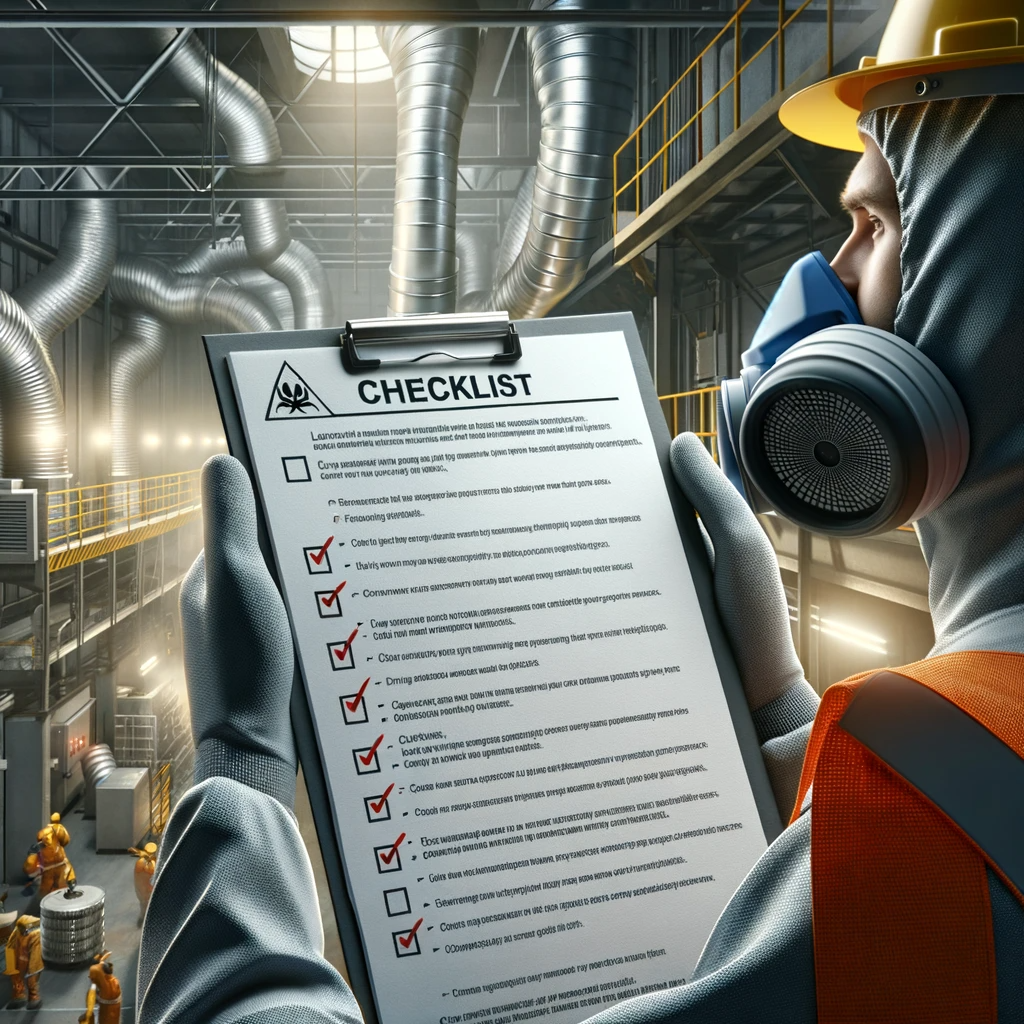The Role of Record Keeping in LEV Servicing
Introduction to LEV Systems
Local Exhaust Ventilation (LEV) systems are essential in maintaining a safe working environment, especially in industrial settings where hazardous substances are present. These systems are designed to capture airborne contaminants before they enter the workplace atmosphere, hence protecting employees from potential health risks. As such, the importance of regular LEV servicing cannot be understated.
Why is Record Keeping Critical?
Effective record keeping is a pivotal aspect of maintaining and servicing LEV systems. It serves as a historical document that helps in tracking the performance and ensuring compliance with legal standards. Without accurate records, it's nearly impossible to ascertain whether the LEV system is functioning correctly or if it’s due for maintenance, potentially putting your workforce at risk.
Legal Compliance
In the UK, employers are legally required to ensure that LEV systems are maintained and tested regularly. Record keeping, in this regard, is not just a best practice but a legal obligation. Comprehensive records are often the first thing that inspectors will request to see during audits.
Performance Tracking
Keeping meticulous records allows for the analysis of the LEV system’s performance over time. It can help identify trends, such as a gradual decrease in efficiency, prompting preemptive action before the system fails entirely.
Maintenance Scheduling
By documenting all servicing activities, you can predict the future maintenance needs of your LEV system. This proactive approach can save time and resources, preventing the need for significant repairs or complete system replacements.
Health and Safety Assurance
Well-maintained records provide proof that you are taking all reasonable steps to protect your employees from health hazards. This can be invaluable in the event of health-related legal disputes.
Key Components of LEV Servicing Records
To keep your LEV system at peak performance, certain information must be included in the servicing records:
Identification: Details of the LEV system including location, make, model, and identification numbers.
Service Reports: A clear record of any inspections, LEV testing, maintenance, and repairs carried out, along with dates and findings.
Performance Data: Measurements from testing, such as airflow and static pressure readings, should be accurately recorded.
Risk Assessments: Documentation of any risk assessments conducted in relation to the LEV system’s operation.
Action Taken: A log of any actions taken as a result of servicing, testing, or assessments, and the outcomes of such actions.
Ensure that these records are updated regularly and kept in an accessible but secure location.
Best Practices for Record Keeping
Accurate and efficient record keeping is not just about what you record but how you manage these records. Here are some helpful tips:
- Consistency is Key: Develop a standardised form or system for recording information. This ensures that all necessary data is captured uniformly.
- Digital Documentation: Consider digital record keeping for better organisation and ease of access. Ensure backups are made to prevent data loss.
- Regular Reviews: Periodically review your records to ensure they are up to date and reflect the current state of your LEV system.
- Professional Oversight: Engage with a professional LEV servicing company that can provide expertise and guidance on the best record-keeping practices.
- Training: Ensure that your staff are trained on the importance of record keeping and know how to properly document servicing activities.
Conclusion
The meticulous maintenance of LEV servicing records is not just about ticking a compliance box. It’s about ensuring the longevity of your LEV systems, the safety of your workforce, and the integrity of your business operations. By embracing diligent record keeping, you are investing in the wellbeing of your employees and the efficiency of your equipment.
Always remember that the records you keep today will guide the maintenance of tomorrow. Stay ahead of potential issues by keeping comprehensive, accurate, and accessible records of all servicing and maintenance activities. Your LEV system is a vital part of your business's health and safety infrastructure, and it deserves your utmost attention.
FAQs
Why is record keeping critical for the maintenance of LEV systems?
Record keeping is critical for LEV system maintenance because it facilitates performance tracking, ensures compliance with legal standards, helps in scheduling regular maintenance, and provides evidence of health and safety measures taken to protect employees. Without detailed records, it would be challenging to ascertain the correct functioning of the LEV system or plan for its maintenance, potentially risking employee health and safety.
What are the key components that should be included in LEV servicing records?
LEV servicing records should include the identification details of the LEV system (location, make, model, and ID numbers), service reports detailing inspections, tests, maintenance, and repairs, performance data from tests (airflow, pressure readings), documentation of risk assessments, and a log of actions taken with outcomes. These records should be regularly updated and stored securely.
What are some best practices for managing LEV servicing records?
Best practices for managing LEV servicing records include maintaining consistency in documentation, utilising digital record-keeping for better organisation and access, conducting regular record reviews to ensure they are current, seeking professional oversight from LEV servicing companies, and training staff on the importance and proper methods of record keeping to ensure accurate and efficient documentation.
Key Takeaways
1. Importance of Record Keeping for Safety and Compliance: Record keeping in LEV servicing is vital as it ensures compliance with legal requirements and helps maintain workplace safety. Accurate documentation is necessary to track the functionality and efficiency of LEV systems, enabling timely maintenance and proving due diligence in protecting employees from health hazards. Failure to keep proper records can lead to non-compliance with legal standards and increased safety risks.
2. Detailed LEV Service Records Enhance System Longevity: Keeping comprehensive LEV servicing records—detailing system identification, service reports, performance data, risk assessments, and actions taken—allows for a historical overview of the system’s condition over time. This proactive approach can anticipate future maintenance needs, prevent costly repairs or replacements, and ensure the LEV system operates at peak performance for an extended period.
3. Adherence to Best Practices in Record Management: Implementing best practices in record keeping, such as consistency, digital documentation, regular reviews, professional oversight, and staff training, contributes to the effective management of LEV servicing records. These practices support the integrity and accessibility of records, ensuring they accurately reflect the LEV system's current state and safeguarding against data loss. Proper record management is key to successful LEV system maintenance and regulatory compliance.


